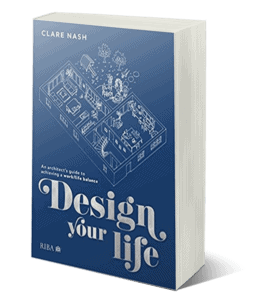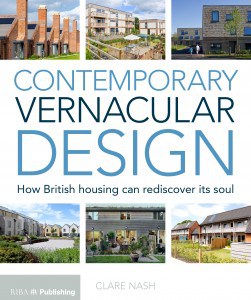How a Holistic Services Strategy can Reduce your Energy Bills
Last year, at the AECB* conference, we met Atamate, some pioneering services engineers. They have managed to achieve Passivhaus levels of energy use in buildings only fitted with building regulations levels of insulation. They have done this by using controllable, instant heating solutions, combined with energy saving ventilation measures. We are now working with them to reduce your energy bills too. Since working with Atamate, we are loving the predictability of their thermal model and the certainty of the outcome for energy use. It is bringing out our inner eco-geeks!
The Problem
We have been working on energy saving retrofit as well as new-build for many years now. With retrofit, we have become concerned at the levels of builder competence required to ensure that thermal bridges do not occur with the upgrades. This is not standard stuff, it requires a builder to understand the physics and to be willing to change normal practice (read extra work) to achieve airtightness and mitigate thermal bridging**. We know builders who have been happy to do this, but we feel it would take too long for all builders to move into this new way of working. We are rapidly approaching the climate crisis deadline of 2050 after all.
The trouble is caused, mainly, by relying on increased levels of insulation to reduce your energy bills. The problem with this in retrofit, is two-fold.
One is that the levels of insulation needed to bring energy use down significantly are quite high, so it is expensive, disruptive and you lose floor space (if installed internally, which is necessary in listed buildings and in conservation areas).
Second, the insulation strategy needs to be fully holistic, otherwise you will end up with thermal bridges that cause cold spots and therefore damp and moisture problems. Moisture is not good in buildings. It’s bad for health and structure, so we need to be careful here.
The Solution
By using a holistic services based approach combined with a fabric first (insulation plus airtightness) approach, we don’t need as much insulation to reduce your energy bills. Thus avoiding most of the moisture issues. Choosing the right services and future-proofing your choices (eg renewables and smart tech) means you will get the best, most cost-effective and long-term outcome for your home.
Example scenarios – is a heat pump right for you?
Heat pumps are popular at the moment due to the RHI grants. A heat pump might be the best solution for you, but it might not be. They are not cheap, so this is useful to know! We have seen worrying examples of ‘oversized heat pumps’ being specified for properties without sufficient insulation to make them efficient. This is why it is so important to have independent advice (from the person not selling the heat pump, ideally).
Instant heat
Instant heat via infrared panels can be controlled remotely so your house is warm when you arrive. Radiant panels (as they are called), also have the advantage of being very slim. Plus, they can be made to look like mirrors or pictures on your wall. They can even be hidden in plaster. Radiant heat heats the objects (and people) in a room, rather than heating the air as convection heaters do (so it can be more efficient).
Exhaust air from kitchens and bathrooms can be used to heat hot water. There are many more options, most are a lot cheaper than a heat pump and provide similar or better energy savings long term.
Fresh air in your home
If you suffer from allergies, you can have ducting and filters in certain areas that ensure warm, fresh, un-polluted air enters your home. For hay fever sufferers, filters can be installed into bedroom ducting to ensure a good night sleep.
Holistic and bespoke, right for your home, not any home
Above are just some examples. Homes are all different in terms of their existing or proposed insulation levels, orientation in terms of solar gain, airtightness levels (read draughts!). So the point of all this, is to get the right solution for your own home, not just any home. It’s holistic and bespoke.
How does it work?
We would meet you to establish your brief and what you would like to do with the house, whether that is an extension, a remodel or just thermal improvements. This service is also recommended for new-build.
- We would need to carry out a measured survey of your house.
- We would arrange for a contractor to carry out an air leakage test. If it is new-build, we would carry out air-tests during the build only.
- We would prepare design drawings (as per our process) and once you are happy with them;
- Atamate would use our drawings and the outcome of the air leakage test to create a thermal dynamic model, this will establish the baseline heating energy consumption for your home.
- Using this model, Atamate can carry out some ‘what-if’ scenarios, whereby various upgrades can be tested eg secondary glazing, making suspended floors airtight, insulating floors, roofs and walls.
- Following this Atamate will be able to predict the required heat load in each room, the key to a successful outcome is to use this data to select a responsive heating system. ***
- Atamate will make recommendations for heating, ventilation and outcomes of the what-ifs.
- We would update our drawings accordingly, obtain necessary planning approvals and building control approvals as well as prepare drawings for your builder.
- Construction. Air leakage tests would be carried out during the build to ensure that any gaps are not accidentally plastered over (costly to fix later).

*The Association of Environment Conscious Building
**Thermal bridging is what happens when a building element connects the outside to the inside with a higher thermal conductivity than the surrounding material. This can happen where an uninsulated internal masonry wall meets an internally insulated external wall, for example. Without careful design, this can cause cold spots, mould and damp issues.
***Some extra nerdy stuff for those who want to read more about how it works:
There are a few key elements to the Atamate approach to point out…
How heating has changed over the years, what is infrared and why is heat pump efficiency important?
Firstly, older buildings were generally designed to be heated one room at a time when occupied and therefore had a fireplace in each room. Whilst not hugely efficient the glowing embers of a fire emit a type of radiation known as infrared. This is the part of the electromagnetic spectrum which has a warming effect on our bodies. For example, on a cold day in winter you can still end up in a t-shirt if the sun is strong. This infrared heating, known more generally as radiant heating allows a room to feel comfortable even if the air temperature is lower than we might normally expect to set a thermostat to. This means that our ancestors who occupied these houses didn’t try to achieve the same air temperatures that we do now.
This is important because it is the air temperature in a building that dictates how much heat is lost through an external wall, the roof or a window. In fact if a house is heated to a temperature of 21 degrees then it will consume around 20-30% more heating energy than a building heated to 18 degrees without any change to the insulation.
Modern homes and boilers, but less control
Many houses have been retrofitted with central heating systems that may be driven by a gas or oil fired boiler. These systems are generally controlled by a single thermostat in one room of the house. Some local control in rooms is possible using thermostatic radiator valves (the dial you turn at one end) which offer fairly limited response and can often get stuck. This means that in general when the heating system is on, it’s trying to heat the whole house.
There is much talk of saving energy by replacing boilers with heat pumps. However in order to heat a room, your radiators generally need to be heated to 70 degrees to achieve a large temperature between itself and the room. Burning gas or oil can achieve this temperature easily but heat pumps drop in efficiency significantly at this temperature. This is why underfloor heating is often proposed in conjunction with a heat pump. This effectively turns your whole floor into a very large radiator which can deliver sufficient heat at a lower temperature.
However, underfloor heating is extremely expensive to retrofit and notoriously slow to respond (i.e. when you turn the dial of your thermostat up 2 degrees, it will be hours before the room reaches that temperature). This means the underfloor heating system needs to run fairly continuously and heat the whole house meaning that expensive deep retrofit for insulation becomes necessary.
Old meets new – The Atamate approach providing more control
The Atamate approach brings modern digital technology to our ancestors’ approach of only heating a room when it is occupied. Occupancy detection is used by the system to see when you enter a room and activate the heating. This in turn means a fast response heating system is needed. This may involve a fan boost or a radiant heating system which uses the principles of infrared energy transfer as described earlier. In time the system will start to learn your routines and make educated guesses about when to heat rooms so you barely notice it’s there.
The main effect of this is to set out to achieve a lower average temperature in the parts of the house which are not occupied and in turn make significant savings in energy efficiency. These savings will be further improved if the system is deployed with targeted upgrades to the fabric of the building which are simpler and more cost effective to implement.
Most thermal modelling software can only look at blanket whole house temperatures. But we as you see from above, we actually need to know about individual room temperatures to design a heating system appropriately. For example the top floor of your house could be very well insulated due to roof insulation, but the lower floors might have uninsulated walls, so they would need a different approach to heating.
A bit more about heat pump efficiency
Heat pump efficiency is related to the temperature in your radiators. If the heat losses are high (read poor insulation to walls, roofs and floors such as in the 6 degree kitchen above) then the radiators need to be high temperature to achieve the require heat output and this means poor efficiency. Poor efficiency, means that you are essentially paying for electricity to heat your home – the most expensive heat source.




